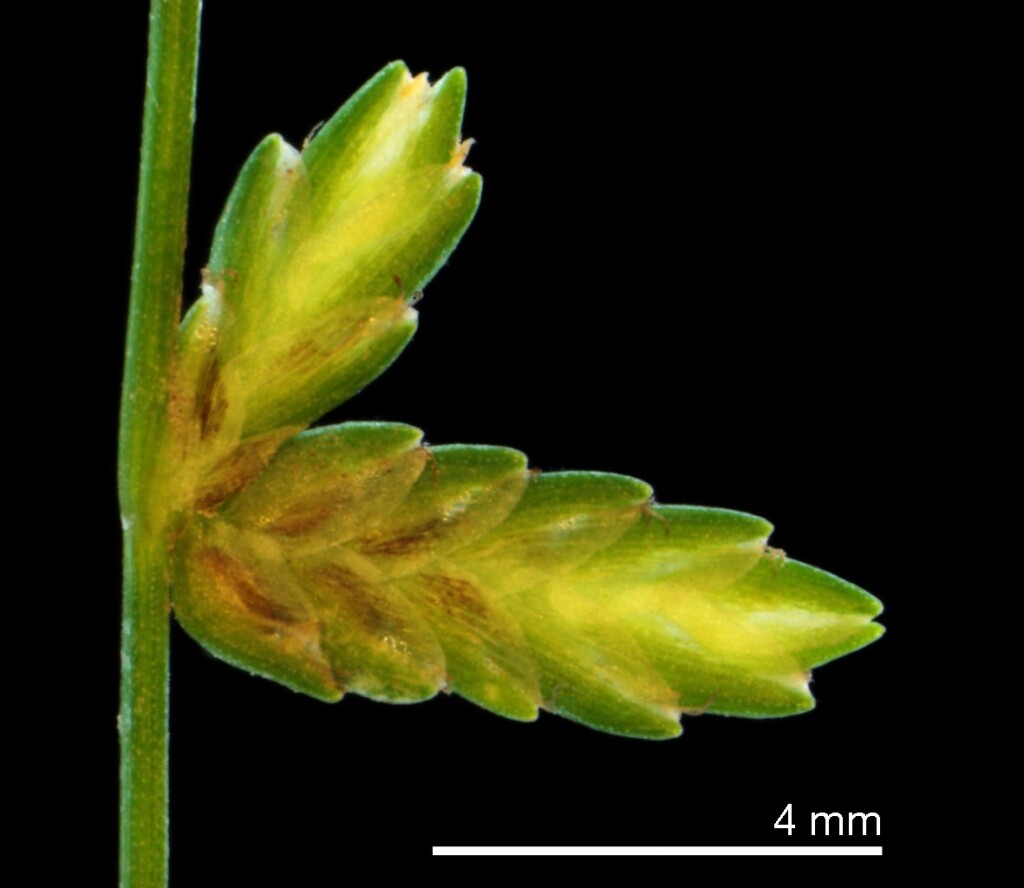Isolepis levynsiana
Muasya & D.A.SimpsonDwarf tufted annual. Culms filiform, trigonous to compressed, 1–8 cm high. Leaves filiform, to 8 cm long, not septate-nodulose, shorter than culms. Inflorescence a pseudolateral, digitate cluster of 1–4 sessile spikelets; involucral bracts leaf-like, 1 erect and shorter or longer than inflorescence. Spikelets flattened, 4–8 mm long, 2–2.5 mm broad, 4–20-flowered; rachilla not winged, persistent; glumes obtuse or shortly acuminate, with sides 2–5-nerved, greenish to pale brown, often tinged red-brown, 1.5–1.7 mm long; stamens 1–3; style 3-fid. Nut triquetrous, ellipsoid to obovoid, minutely reticulate to minutely verrucose, pale to mid-brown, from one-half to two-thirds as long as glume, 0.8–1.0 mm long, 0.6–0.7 mm diam. Flowers spring–summer.
LoM, MuM, Wim, GleP, Brid, VVP, VRiv, GipP, OtP, WaP, Gold, CVU, GGr, DunT, NIS, EGL, EGU, WPro, HSF, HNF, OtR, Strz. Also WA, SA, NSW, ACT, Tas. Native to Southern Africa. In seasonally damp open situations, usually associated with other small annuals both native and naturalized.
Wilson, K.L. (1994). Cyperaceae. In: Walsh, N.G.; Entwisle, T.J., Flora of Victoria Vol. 2, Ferns and Allied Plants, Conifers and Monocotyledons, pp. 238–356. Inkata Press, Melbourne.
 Spinning
Spinning


